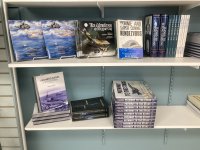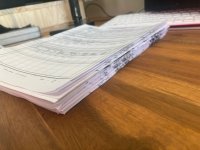So, a hypothetic...
It's 1993,the old ASN-501 is still in the aircraft, the CH-124B HELTAS is just coming online, we actually understood that the Persian Gulf wasn't a one off and that doing less ASW is a reality for the next 25 years, and we also understand there is less money for the next 10 or so.
Instead of just saying "I'll take my pen, and write zero 'elicopters" Cretien says "I've directed that the EH-101 be cancelled, as it is not the right helicopter for Canada at this time. Furthermore, DND is to investigate the proper fit for the future. To that end, we will fund appropriate investments in the Sea King to keep it flying for 10-15 years and update it to understand what the true requirement is."
Project office rapidly (as if) gets to work, and determines that the ASN-150 is the best choice because:
- already fielded in the 60B
- can have more than one workstation (60B had one in the back for a second aircrewman and one in the front for a "co-tac," the non-flying pilot)
- future proof by having a 1553 bus
- can display video and a tacplot
- has the 123 tacplot link, but not Hawk Link
In order to implement that, they put in place Canadian software support and the following:
- radar scan converter to put the radar picture and the tacplot together (thereby enabling the British model of having the Observer [ie Nav] handle radar and plot)
- keep the sonar wet end but use the HELTAS UYS-503 processor the display it (giving both dipping and sono processing, but not many buoys)
- put the FLIR on the display
- three workstations; two in the back, and one for the left seat pilot
- a method of receiving and transmitting on the Link is installed in the ships, which includes forwarding from / to Link-11.
So, now you could follow either model. The overlaid model would let you keep the nav, do better command and control, and use the front end for SA and task offload. The data link would allow you to do the USN model of a co-tac, and depend on the ship/fleet for higher level C2.
You're crewing options are therefore:
- two pilots, two navs (the EH-101 model), with the sensors being run by a nav due to the influence of the CP-140 on MH crewing choices
- two pilots, one nav, one AESOP (the Sea King, Cyclone, and RN model)
- two pilots, two AESOPs (the 60B model, with less C2 capability)
- one pilot, one nav, two AESOPs (a plused up RAN model)
Which model do you choose ("controlled by the ship" enabled by the link, or independant), and which crewing?
I know my choice, but I'm interested in the discussion (if anybody cares)...





